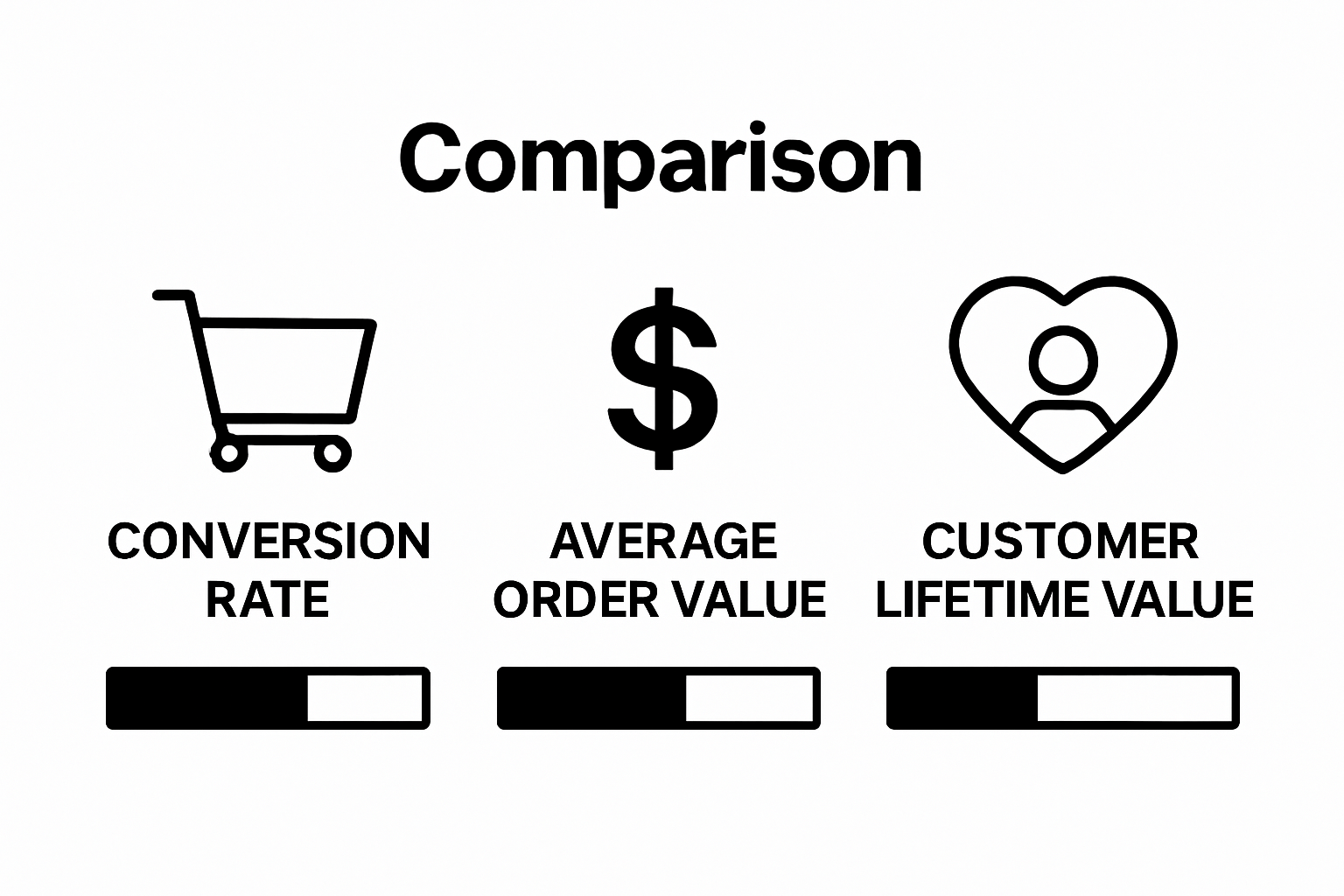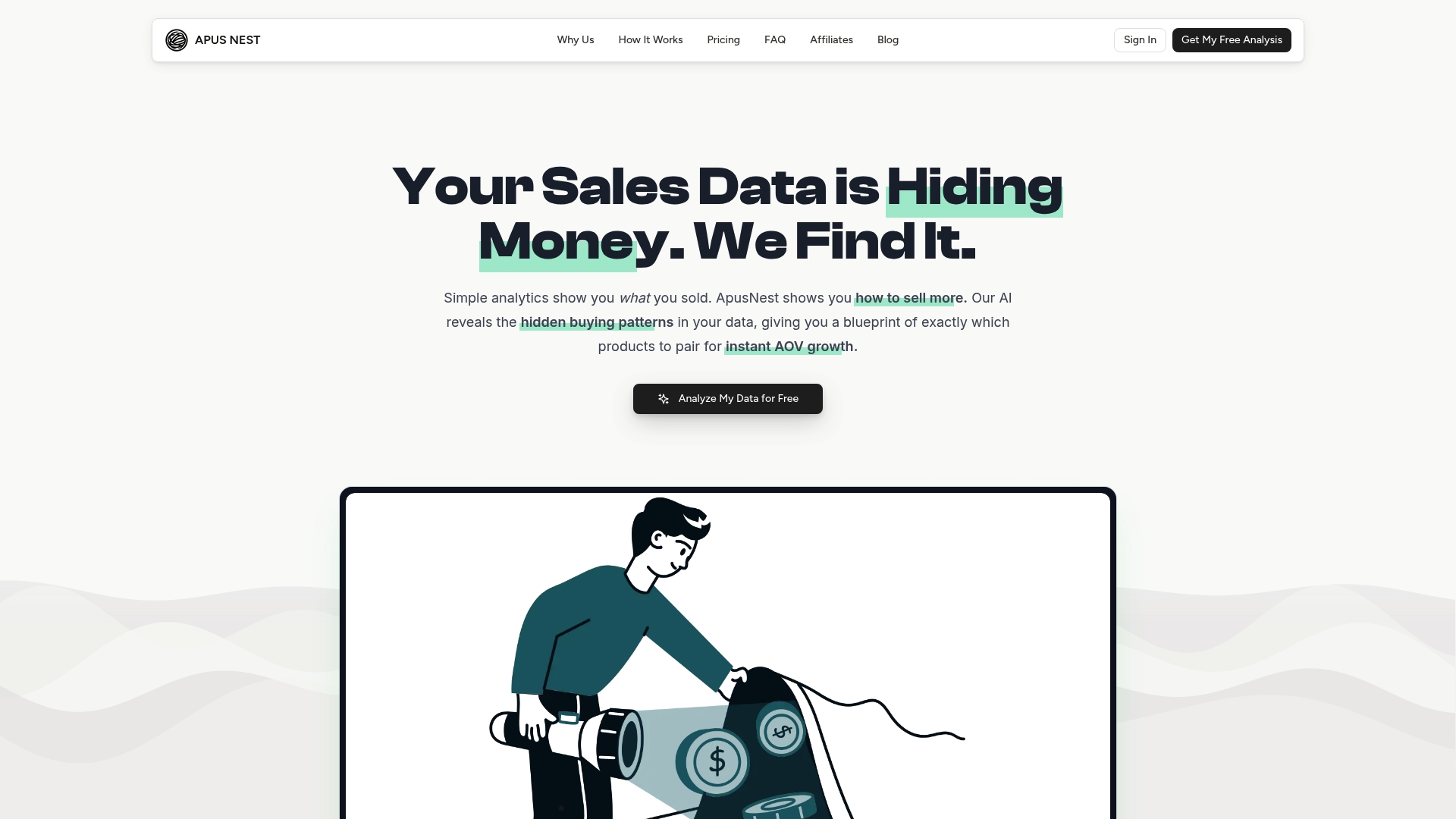
Retail analytics is rapidly reshaping e-commerce strategy. Businesses that harness its power can see benefits like a 40 percent increase in customer retention through data-driven personalization. Most people think retail analytics is just about tracking sales numbers or total revenue reports. The real secret lies in its ability to predict trends and reveal hidden patterns that help online stores outsmart the competition.
Table of Contents
- Defining Retail Analytics: What It Is And Why It Matters
- Key Metrics In Retail Analytics: Understanding The Language
- Data-Driven Decision Making: The Role Of Analytics In Retail
- Advanced Concepts In Retail Analytics: Insights For Growth
Quick Summary
| Takeaway | Explanation |
|---|---|
| Retail analytics unlocks strategic insights. | It converts raw sales data into actionable strategies for e-commerce innovation. |
| Essential metrics guide decision-making. | Metrics like conversion rate and customer lifetime value reveal business performance trends and opportunities. |
| Data-driven strategies enhance competitive advantage. | Systematic analysis of metrics helps predict customer behavior and tailor marketing efforts effectively. |
| Advanced analytics techniques drive growth. | Utilizing predictive and prescriptive analytics aids in refining operational strategies and increasing revenue potential. |
| Understanding customer behavior is crucial. | Insights into buying habits are essential for optimizing product offerings and improving customer engagement. |
Defining Retail Analytics: What It Is and Why It Matters
Retail analytics transforms raw sales data into actionable strategic insights that help e-commerce businesses make smarter decisions. At its core, retail analytics is a sophisticated approach to understanding and optimizing your online store's performance by systematically analyzing complex datasets.
The Fundamental Nature of Retail Analytics
Retail analytics represents more than just number crunching. According to Coursera, it involves leveraging software to analyze data from diverse sales channels, revealing critical insights into customer behavior and market trends. This process goes beyond simple reporting by providing deep, nuanced understanding of your business ecosystem.
Key characteristics of retail analytics include:
- Aggregating data from multiple sources like website traffic, sales records, and customer interactions
- Transforming complex data into clear, actionable recommendations
- Identifying patterns that are invisible through traditional analysis methods
Why Retail Analytics Matters for E-Commerce Success
For e-commerce entrepreneurs, retail analytics is not a luxury but a necessity. It enables surgical precision in understanding customer preferences, optimizing inventory, and designing targeted marketing strategies. Digital Strategies Research reveals that successful retailers leverage data across five critical dimensions: customers, products, time, location, and sales channels.
By embracing retail analytics, you gain the ability to:
- Predict customer buying behaviors with remarkable accuracy
- Optimize product placement and pricing strategies
- Reduce operational inefficiencies and minimize unnecessary expenses
To truly unlock your store's potential, consider exploring advanced market basket analysis techniques that can dramatically improve your revenue strategies.
Key Metrics in Retail Analytics: Understanding the Language
Retail analytics speaks a specialized language of metrics that transforms raw numbers into strategic insights. Understanding these key performance indicators (KPIs) allows e-commerce entrepreneurs to decode their store's performance and make informed decisions.
Essential Performance Metrics Every Store Owner Needs
The landscape of retail analytics comprises several critical metrics that provide a comprehensive view of your online business. According to the U.S. Department of Commerce, these metrics help businesses track growth, understand customer behavior, and optimize operational strategies.
Key performance metrics include:

- Conversion Rate: Percentage of website visitors who complete a purchase
- Average Order Value (AOV): Total revenue divided by number of orders
- Customer Lifetime Value (CLV): Predicted total revenue from a customer relationship
Interpreting Metrics for Strategic Decision Making
These metrics are not just numbers but powerful tools for strategic planning. They reveal patterns in customer behavior, highlight potential revenue opportunities, and pinpoint areas requiring optimization. For instance, a low conversion rate might signal issues with website design, pricing, or product presentation.
Additional crucial metrics encompass:
- Cart Abandonment Rate: Percentage of shoppers who add items to cart but do not complete purchase
- Customer Acquisition Cost: Total expense of acquiring a new customer
- Repeat Purchase Rate: Percentage of customers making multiple purchases
Dive deeper into advanced market basket analysis techniques to transform these metrics into actionable revenue strategies. By mastering these key terms, you unlock the potential to make data-driven decisions that can significantly boost your e-commerce success.
To help readers understand the key performance indicators (KPIs) used in retail analytics, the following table summarizes the main metrics, their definitions, and what they reveal about e-commerce performance.
| Metric | Definition | Business Insight |
|---|---|---|
| Conversion Rate | Percentage of website visitors who complete a purchase | Indicates effectiveness of site in driving sales |
| Average Order Value (AOV) | Total revenue divided by number of orders | Measures average revenue per transaction |
| Customer Lifetime Value (CLV) | Predicted total revenue from a customer relationship | Reveals long-term value of customer relationships |
| Cart Abandonment Rate | Percentage of shoppers who add items to cart but don't purchase | Highlights potential friction points in the checkout process |
| Customer Acquisition Cost | Total expense of acquiring a new customer | Assesses marketing and sales cost efficiency |
| Repeat Purchase Rate | Percentage of customers making multiple purchases | Shows customer loyalty and retention effectiveness |

Data-Driven Decision Making: The Role of Analytics in Retail
Data-driven decision making transforms gut instincts into strategic precision, enabling e-commerce entrepreneurs to navigate complex business landscapes with confidence. It represents a systematic approach to understanding business performance by leveraging statistical insights and empirical evidence.
Understanding Data-Driven Strategy Foundations
At its core, data-driven decision making is about replacing assumptions with actionable intelligence. According to MIT Digital Strategies Research, this approach helps retailers address critical challenges throughout product lifecycles, from initial market introduction to long-term customer engagement strategies.
Key characteristics of effective data-driven strategies include:
- Comprehensive Data Collection: Gathering information from multiple touchpoints
- Rigorous Analysis: Transforming raw data into meaningful insights
- Continuous Performance Monitoring: Tracking and adapting strategies in real-time
Translating Analytics into Competitive Advantage
Successful data-driven decision making goes beyond mere number crunching. It requires a holistic understanding of how different metrics interconnect to reveal deeper business narratives. By systematically analyzing customer behaviors, purchase patterns, and market trends, e-commerce businesses can develop predictive models that anticipate customer needs before they emerge.
Strategic applications of data-driven insights encompass:
- Personalizing marketing campaigns
- Optimizing product recommendations
- Identifying potential market expansion opportunities
Explore advanced AI techniques for e-commerce analytics and unlock your store's full potential by transforming raw data into strategic growth opportunities.
Advanced Concepts in Retail Analytics: Insights for Growth
Advanced retail analytics represents a sophisticated approach to understanding complex business dynamics, moving beyond basic metrics to uncover nuanced insights that drive strategic decision making.
These advanced techniques transform raw data into powerful predictive models that can revolutionize e-commerce performance.
The Four Pillars of Advanced Analytics
According to Marquette University's Business Analytics Research, advanced analytics encompasses four critical categories that progressively build strategic intelligence:
- Descriptive Analytics: Understanding what happened in past performance
- Diagnostic Analytics: Investigating why specific outcomes occurred
- Predictive Analytics: Forecasting potential future trends and behaviors
- Prescriptive Analytics: Recommending specific actions to optimize outcomes
Sophisticated Analytical Techniques for E-Commerce Growth
Modern retail analytics leverages complex mathematical models and machine learning algorithms to decode intricate customer behaviors. By integrating multiple data sources and applying advanced statistical techniques, businesses can develop highly personalized marketing strategies that anticipate customer needs with remarkable precision.
Key advanced analytical approaches include:
- Sentiment analysis of customer interactions
- Machine learning-powered recommendation engines
- Complex customer segmentation models
Discover powerful market basket analysis strategies that can transform your understanding of customer purchasing patterns and unlock hidden revenue opportunities. These advanced techniques represent the cutting edge of e-commerce intelligence, enabling entrepreneurs to make data-driven decisions with unprecedented accuracy.
Below is a table detailing the four main categories of advanced retail analytics, providing a concise definition and their strategic purpose for e-commerce growth.
| Analytical Pillar | Definition | Strategic Purpose |
|---|---|---|
| Descriptive Analytics | Understanding what happened in past performance | Provides historical context and identifies trends |
| Diagnostic Analytics | Investigating why specific outcomes occurred | Pinpoints causes and explains performance shifts |
| Predictive Analytics | Forecasting potential future trends and behaviors | Anticipates future demands and behaviors |
| Prescriptive Analytics | Recommending specific actions to optimize outcomes | Guides decisions for optimal business strategies |
Ready to Turn Retail Analytics Insights Into Real Revenue Growth?
You have just learned how understanding the right retail analytics terms opens the door to smarter decisions and bigger profits. Yet, the challenge remains: translating complex metrics like conversion rate, AOV, and product relationships into clear strategies that actually increase your store's revenue. Feeling overwhelmed with raw data or missing sales from untapped cross-sell opportunities is all too common for e-commerce entrepreneurs.

Take action today and let APUS NEST transform your sales data into actionable insights. Get a free report to uncover instant product pairing opportunities or unlock the full power of advanced market basket analysis powered by AI. Experience transparent, exportable analytics with no subscriptions or hidden costs. Visit apusnest.com to start using your data the way it was meant to be used: for growth.
Frequently Asked Questions
What is retail analytics?
Retail analytics involves analyzing sales data to gain insights into customer behavior and market trends. It helps e-commerce businesses optimize performance and make informed decisions based on comprehensive data analysis.
Why is retail analytics important for e-commerce businesses?
Retail analytics is crucial for e-commerce success as it allows businesses to understand customer preferences, optimize inventory management, and design targeted marketing strategies, ultimately leading to increased sales and operational efficiency.
What are key performance metrics in retail analytics?
Key performance metrics in retail analytics include Conversion Rate, Average Order Value (AOV), Customer Lifetime Value (CLV), Cart Abandonment Rate, Customer Acquisition Cost, and Repeat Purchase Rate. These metrics help businesses evaluate their performance and identify areas for improvement.
How can advanced analytics benefit my e-commerce strategy?
Advanced analytics can enhance your e-commerce strategy by providing insights through predictive and prescriptive analytics. This allows businesses to anticipate customer needs, personalize marketing efforts, optimize product recommendations, and identify new market opportunities.
